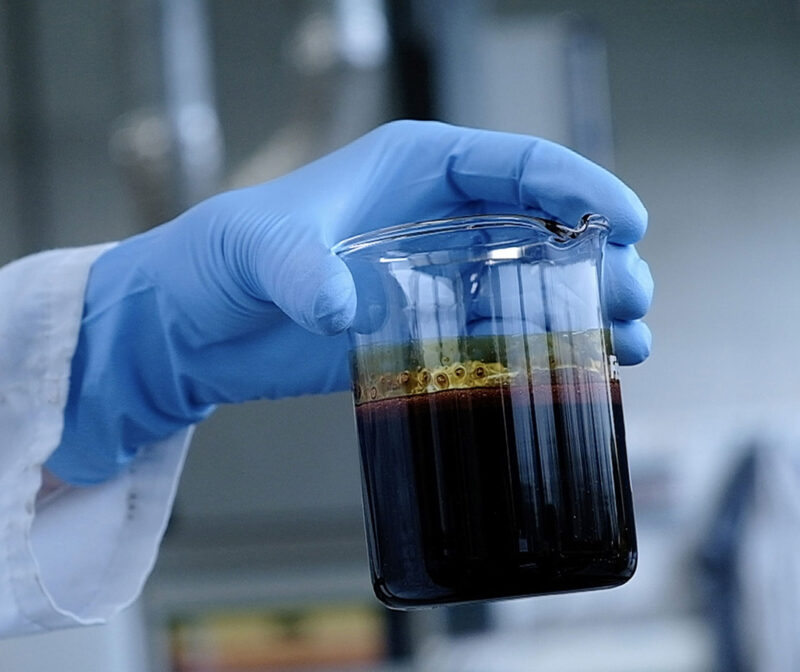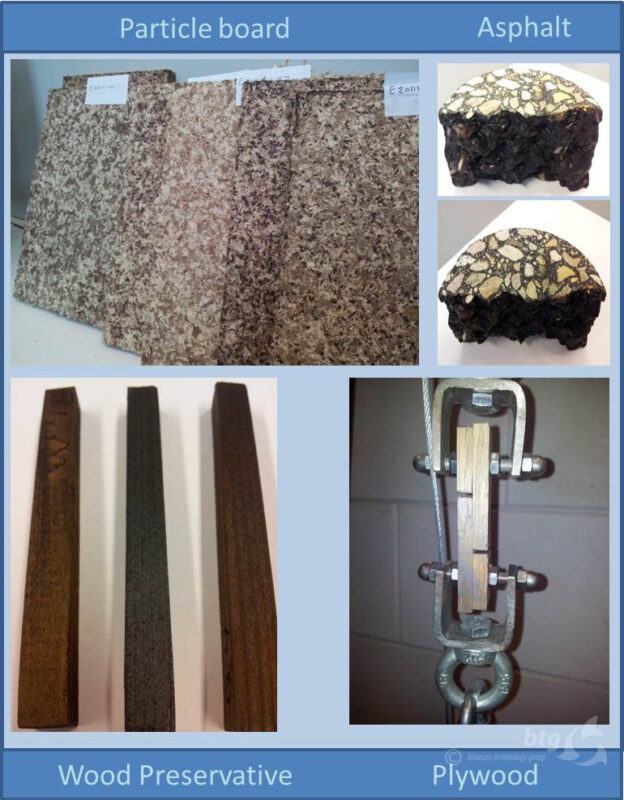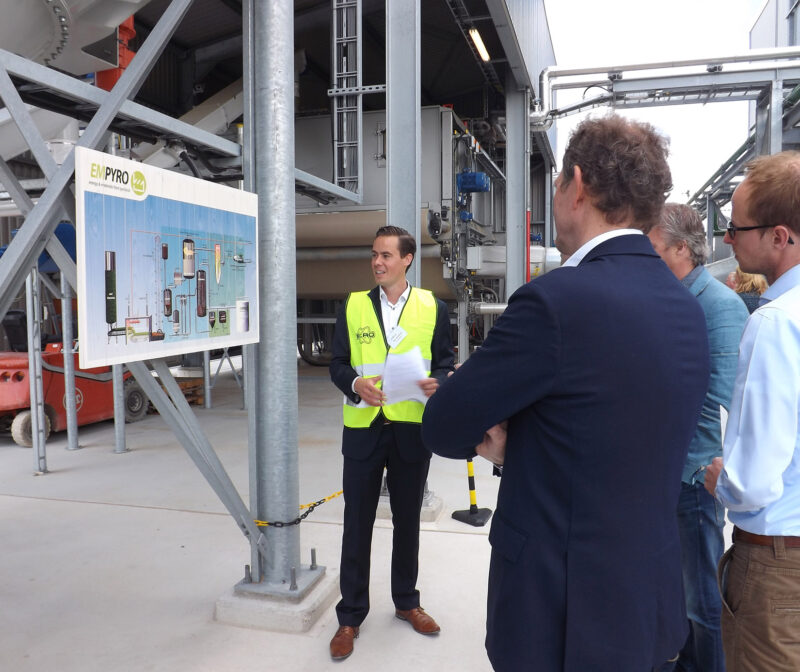

Pyrolysis oil is a mixture of cracked components originating from the pyrolysis of the three main building blocks of biomass; cellulose, hemicellulose and lignin.
After pyrolysis the oil can easily be fractionated into three product streams namely; pyrolytic lignin (from lignin), pyrolytic sugars (from cellulose) and a watery phase containing smaller organic components e.g. acetic acid (mainly from hemicellulose).


BTG has demonstrated pyrolytic lignin to be a potential substituent for fossil phenol in phenol/formaldehyde resins. These types of resins are widely used in wood products like particle boards, plywood etc. Another interesting application of the pyrolytic lignin is in the replacement of fossil bitumen in various bitumen based materials e.g. in asphalt. Also the pyrolytic lignin could be used in the production of green phenolic (mono-) derivatives, as a possible raw material for various coatings, composites and preservatives.
This sugar phase could be a renewable source for the production (via glucose) of e.g. bio-ethanol, levulinic acid, polyols etc. It has a high potential as a renewable sugar source due to the fact that it is not extracted from food sources like corn, sugarcane etc.
From the last fraction, the water phase, acetic acid can be produced by means of an extraction step followed by simple distillation. Applications of this acetic acid could for example be in the production of acetate salts, as a cleaning agent etc.
Like a crude oil based refinery, a range of products can be produced from biobased materials using standard refinery units. The basis of the pyrolysis biorefinery concept presented in this scheme is the fractionation of the pyrolysis oil. Fractionation results in various qualities of oil needed for further upgrading into fine chemicals, petrochemicals, automotive fuels and energy. Ultimate goal is maximum valorization of the pyrolysis oil.
Recently biorefining pyrolysis oil has gained increasing attention worldwide. BTG-Bioliquids sister company BTG Biomass Technology Group is involved in research into pyrolysis based biorefineries.
A biorefinery based on pyrolysis oil is designed much like a traditional refinery. First biomass is converted into pyrolysis oil which can be a decentral process. Secondly, pyrolysis oil from different installations is collected at the biorefinery where it will be divided into different fractions.
Each fraction can be upgraded with a different technology to finally derive the optimal combination of high value and low value products from the pyrolysis oil. This approach offers the following advantages:
